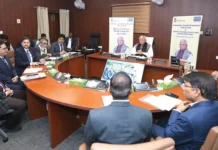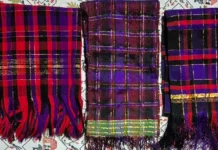[ Gollo Mary ]
“Let food be thy medicine and medicine be thy food.”
– Hippocrates
In celebration of Poshan Maah (Nutrition Month), 2024, it is crucial to address anaemia as a significant health concern in Arunachal Pradesh. Despite the region’s high meat consumption, anaemia remains prevalent, especially among adolescent girls and pregnant women.
According to the World Health Organisation, anaemia is defined as a deficiency in red blood cells or haemoglobin, which reduces the blood’s ability to transport oxygen.
One of the primary nutritional considerations in combating anaemia is iron intake; however, iron deficiency is not the only cause of anaemia. There are two types of iron: heme and non-heme. Heme iron, found in meat, fish, and poultry, is easily absorbed by the body. Non-heme iron, present in dark green leafy vegetables, beans, lentils, and fortified cereals, requires Vitamin C for better absorption. Pairing non-heme iron with Vitamin C sources like citrus fruits or tomatoes enhances iron uptake and counteracts absorption blockers like phytates and oxalates found in whole grains and spinach. While the iron content in eggs and dairy products is comparatively lower.
It is advisable to avoid consuming tea, coffee, and calcium-rich foods during meals, as they can inhibit iron absorption. Calcium supplements should be used cautiously and under medical supervision.
Using cast-iron cookware can be beneficial, particularly for enhancing the iron content of the food. Folate and Vitamin B12 are also crucial for red blood cell formation.
Additionally, iron supplementation might be necessary for some individuals, but this should always be done under medical supervision to avoid potential side effects.
In Arunachal, we are fortunate to have access to a variety of iron-rich foods. Our diet includes meat and meat products, with organ meats like beef liver being especially rich in iron – 100 grams provide 6.2 mgsof iron. Fish, poultry, and leafy greens such as spinach, taro leaves, mustard leaves, amaranth leaves, edible ferns (diplazium esculentum), sweet potato leaves, moringa leaves, oyik (pouzolziahirta), beetroot leaves, etc, are also excellent sources of iron.
The Indian Recommended Dietary Allowance for iron varies based on age, gender, and physiological status. Pregnant women need 40 mgs per day, lactating women require 23 mgs per day, and other women should aim for 29 mgs per day. Adolescent girls need 30-32 mgs per day, while men require 19 mgs per day and adolescent boys need 22-26 mgs per day.
Disclaimer: This information is intended for educational purposes only. Dietary changes should be made under the guidance of a nutrition expert, as individual needs vary. (The contributor is a Delhi based dietician.)





